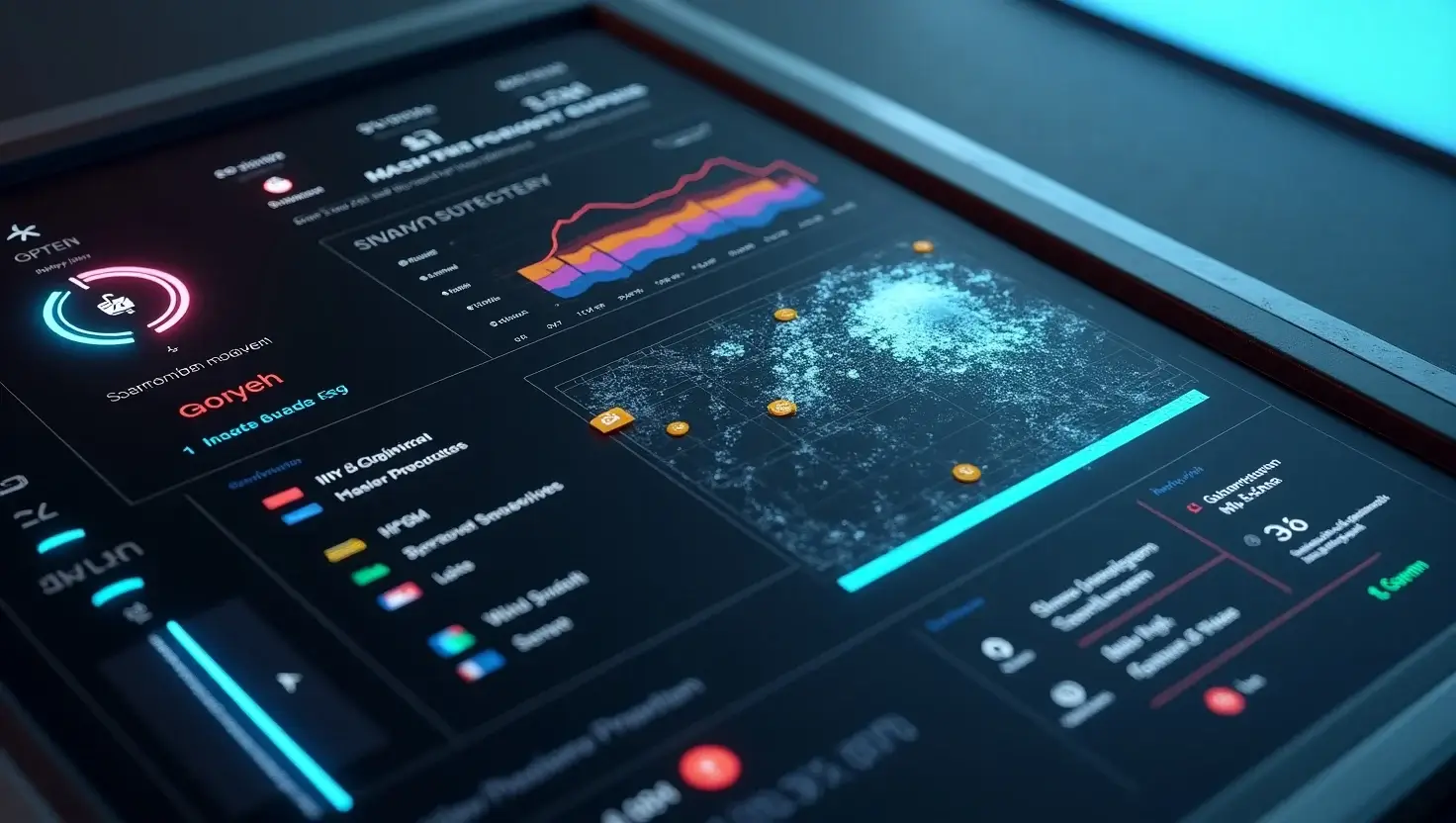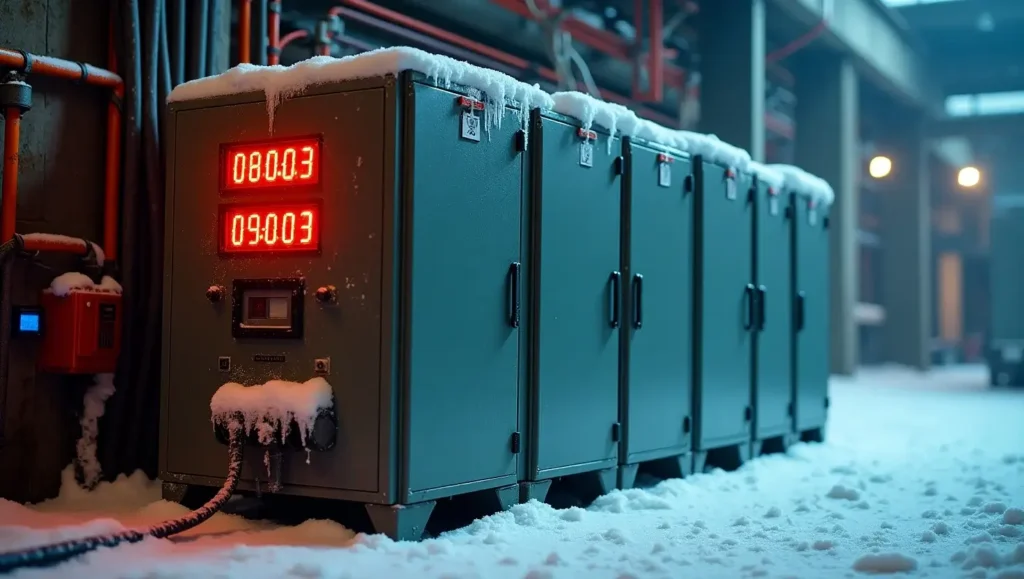Is your business ready for the next snowstorm-induced blackout?
Power outages in snow-covered regions aren’t just inconvenient—they can cripple operations, shut down critical systems, and disrupt telecom networks when you need them most. In extreme cold, even a momentary loss of power can trigger costly failures. That’s why learning to Snowbreak Locate Uninterruptible Power Supply (UPS) the right way is no longer optional—it’s mission-critical.
This guide delivers a step-by-step playbook for identifying, installing, and maintaining backup power systems that thrive in sub-zero temperatures. From system stability insights to expert-recommended components, we simplify complex engineering decisions into clear, actionable strategies.
Whether you’re managing a data center, healthcare facility, or transportation hub, we’ll help you ensure energy continuity and prevent power interruptions before they start.
Inside, you’ll discover the science behind Snowbreak Locate Uninterruptible Power Supply performance in the cold, common mistakes to avoid, and how to build a smart, AI-powered power infrastructure for harsh climates.
Let’s protect your uptime—even when winter strikes hardest.
What is a UPS and Why It Matters in Snowbreak Conditions
A Uninterruptible Power Supply (UPS) is an electrical device that provides emergency backup power systems when the main power source fails. It keeps equipment running without interruption, even for a few seconds, to allow for safe shutdown or seamless switch to generators.
In snow-covered regions, power supply can be highly unpredictable. Heavy snow and ice can bring down lines, disrupt grids, and cause repeated power outages. In such conditions, a UPS acts as a critical buffer—offering immediate emergency power to keep critical systems like servers, hospital equipment, or communication networks running.
When you Snowbreak Locate Uninterruptible Power Supply correctly, you shield your operations from risk. But failure to do so can be catastrophic.
Case in point: In 2022, a Midwest telecom hub suffered total blackout during a snowstorm due to poor UPS insulation. As the temperature dropped, batteries failed, and the entire network went down for hours. The financial and reputational cost was steep—and preventable.

This is why UPS placement in snowy environments isn’t just technical—it’s strategic. Without it, ensuring uninterrupted energy flow is nearly impossible.
The Science Behind UPS Performance in Snow and Extreme Cold
Cold environments introduce unique challenges to Snowbreak Locate Uninterruptible Power Supply functionality. Batteries—especially lead-acid types—lose significant efficiency below 32°F. As temperatures drop further, their chemical reactions slow, reducing available capacity by up to 50%.
This isn’t just a performance dip—it’s a threat to system stability.
In sub-zero temperatures, internal resistance in batteries increases. This causes the Snowbreak Locate Uninterruptible Power Supply to shut down prematurely, even if the battery appears fully charged at room temperature. The Department of Energy reports that at -4°F, most UPS systems experience a 30–40% increase in failure risk.
Maintaining reliable power infrastructure under these conditions requires more than just installing a standard unit. It involves choosing temperature-tolerant batteries, regulating enclosures, and planning for redundancy.
Ultimately, the science proves one thing: without proper Snowbreak Locate Uninterruptible Power Supply practices, your system is vulnerable—not from load, but from the weather itself.
How to Snowbreak Locate Uninterruptible Power Supply: A Step-by-Step Technical Guide
Placing a UPS in snow-covered regions requires much more than plugging it in and hoping for the best. The difference between system success and catastrophic failure often comes down to where and how you Snowbreak Locate Uninterruptible Power Supply within the operating environment.
Indoor vs. Outdoor UPS Placement
Indoor placement offers better temperature control but may increase cable lengths and reduce efficiency. In contrast, outdoor setups in cold environments are closer to the load but must be heavily protected against snow, wind, and freezing temperatures.
When managing systems under harsh conditions, prioritize placement that allows easy maintenance, adequate ventilation, and climate insulation.
Key Environmental Considerations
- Ventilation: Prevent overheating and condensation buildup.
- Moisture sealing: Use NEMA-rated enclosures to block snow and sleet.
- Wind exposure: Minimize contact with direct wind chill and drifting snow.
Step-by-Step Snowbreak UPS Placement
- Site Assessment
Evaluate terrain, snowfall intensity, wind patterns, and equipment access. Account for the impact of snowdrifts and storm runoffs. - Environmental Shielding
Install insulated, weather-resistant enclosures with proper IP/NEMA ratings. Add wind barriers and sloped roofing to prevent snow accumulation. - Thermal Management
Use built-in heaters or climate-controlled cabinets to maintain optimal battery temperatures in sub-zero temperatures. - Remote Monitoring Setup
Integrate SNMP-compatible systems for real-time status updates. This supports ensuring consistent power for critical facilities and helps detect failures before they become disasters.
Correctly Snowbreak Locating Uninterruptible Power Supply ensures uninterrupted performance, even during the harshest winter storms.
Choosing the Right UPS Type for Snowbreak Applications
Selecting the wrong type of UPS is one of the most common mistakes in designing backup power systems for snow-prone areas. The right model depends on your load, sensitivity, and environmental demands.
Types of UPS Systems
- Online UPS
Delivers continuous power with zero transfer time. Ideal for data centers and telecom networks in high-risk zones. Best for harsh winters. - Line-Interactive UPS
Offers voltage regulation and backup, suitable for small to medium business setups. - Standby UPS
Lowest cost, but least reliable in power interruptions. Not recommended for critical systems in cold environments.
Battery Technologies
- Lithium-ion: Performs better in cold, lasts longer, lighter weight, but higher upfront cost.
- Lead-acid: Economical, common, but degrades quickly in sub-zero temperatures without thermal support.
Use Case Examples
- Healthcare facilities: Require online UPS with lithium batteries for high reliability.
- Transportation hubs: Use line-interactive units with weather protection for signal systems.
- Remote telecom towers: Pair lithium-ion UPS with smart remote monitoring.
Matching UPS type with real-world climate demands is essential to maintaining reliable power infrastructure.
Industries That Can’t Afford UPS Failure in Snow Zones
Not all power disruptions are equal—some industries experience devastating fallout from even brief outages. In snow-covered regions, downtime can risk lives, data, or millions in revenue.
Sectors at Highest Risk
- Data Centers
Require stable voltage and zero delay. Even milliseconds of power interruption can corrupt petabytes of live data. - Telecom Networks
Keep communication active during storms. A single failure could affect emergency calls and public safety systems. - Healthcare Facilities
Depend on UPS for life-saving equipment. Defibrillators, oxygen pumps, and monitors must never lose power. - Transportation Hubs
Airports, rail control centers, and road signals need consistent power grid stability to operate safely during extreme weather.
Case Study: Telecom Blackout
In early 2023, a major telecom provider in Colorado suffered a 6-hour outage due to a failed UPS exposed to icy wind. Improper Snowbreak Locate Uninterruptible Power Supply planning led to frozen batteries and controller shutdown. The result? Thousands without service during an emergency.
These examples reinforce the need for robust, environment-specific UPS placement in snowy environments.
Must-Have Features in UPS for Harsh Environments
In cold environments, standard UPS models often fall short. Snowbreak Locate Uninterruptible Power Supply strategies ensure functionality during winter storms by selecting devices equipped with specialized features tailored to survive and perform.
Critical UPS Features
- Cold-Start Capability
Allows startup in low temperatures without mains power—vital during grid failure. - Thermal Insulation & Overcurrent Protection
Protects internal circuits from freezing or overload in case of voltage spikes common in storm conditions. - Built-In Climate Compensation
Adjusts charging rates based on external temperature, preserving battery health in sub-zero temperatures. - SNMP-Enabled Smart Monitoring
Enables real-time remote access, crucial for ensuring uninterrupted energy flow in inaccessible or hazardous locations.
Expert Insight
According to Eaton Power Systems:
“UPS units deployed in snow-prone areas must include self-heating modules, automated battery diagnostics, and surge suppression—non-negotiable for mission-critical reliability.”
These features aren’t optional—they’re foundational for energy continuity in harsh climates.
Best Practices for UPS Installation in Snowbreak Conditions
Installing a UPS in snow-prone areas requires more than simply connecting it to the power source. It involves proactive strategies to manage power infrastructure under harsh conditions while ensuring system stability throughout the year.
Key Strategies for Cold-Climate UPS Management
- Always elevate the unit above ground to prevent snow and moisture damage.
- Use temperature-controlled cabinets to guard against battery failure.
- Protect all external wiring with UV- and ice-resistant insulation.
- Conduct thermal load simulations before installation.
Pre-Installation Planning & Inspection Checklist
Before setting up your system, use this checklist to prepare:
- Inspect site for wind exposure and snow accumulation zones.
- Verify nearby heat sources or thermal regulation potential.
- Check for clearance to access enclosures year-round.
- Map backup power source alignment with main grid input.
Integrating with Power Grid Stability Protocols
UPS systems must sync with existing grid regulations for seamless switching. Using ATS (Automatic Transfer Switches) and maintaining compliance with local codes ensures Snowbreak Locate Uninterruptible Power Supply delivers uninterrupted power. This integration supports energy continuity even if the broader power grid stability is threatened.
Pro Tip
Invest in heated enclosures or cabinets with integrated temperature sensors. These additions dramatically improve battery lifespan and prevent system freezing in sub-zero temperatures.
UPS Maintenance Checklist for Year-Round Power Reliability
Without consistent maintenance, even the most advanced Snowbreak Locate Uninterruptible Power Supply will fail when needed most. This simple checklist ensures your system is ready for every snow season.
Monthly Visual Inspections
- Check for snow buildup on vents or enclosure seams.
- Look for battery swelling, corrosion, or wiring damage.
- Confirm display screen status and alerts.
Semi-Annual Battery Testing
- Run full discharge and recharge cycles.
- Measure internal resistance and voltage levels.
- Replace batteries approaching end-of-life.
Firmware Upgrades
Keep your UPS software current to patch vulnerabilities and improve UPS placement in snowy environments performance. Always test after updates to confirm stability.
Avoid These UPS Mistakes in Snow Zones
Harsh winters expose weaknesses in UPS systems quickly. Avoid these common but costly oversights:
Inadequate Battery Capacity
Many facilities underestimate winter draw. Add 30% buffer capacity to account for cold environments that reduce battery efficiency.
Improper Insulation
Without proper thermal regulation, UPS units can shut down before the battery is even needed. Use climate-controlled and insulated housing always.
No Load Testing
A UPS is only as good as its last test. Simulate power interruptions regularly to detect weak links in your backup power systems.
Pro Tips to Prevent Mistakes
- Automate routine diagnostics through SNMP-enabled monitoring.
- Keep spare batteries in climate-controlled storage.
- Document every maintenance activity and test result.
Avoiding these mistakes can be the difference between continuity and crisis.
Cost vs Performance: How to Maximize ROI on UPS in Snowbreak Systems
Choosing between upfront cost and long-term reliability is tricky—but in snow-covered regions, cheap solutions often become expensive failures.
Comparing UPS Options
| Feature | Low-Cost UPS | Industrial-Grade UPS |
| Temperature Tolerance | Poor | Excellent |
| Lifespan | 2–3 years | 7–10 years |
| Smart Monitoring | No | Yes |
| ROI | Low | High |
When to Upgrade
If you’re experiencing frequent power outages, degraded battery life, or lack of monitoring capabilities—it’s time to upgrade. Don’t wait until a system failure in cold environments costs you thousands in downtime.
ROI Example: Mid-Sized Telecom Facility
An $8,000 lithium-ion UPS with smart climate monitoring prevented five outages over two winters—saving $45,000 in avoided downtime and emergency service costs.
Ensuring uninterrupted energy flow with Snowbreak Locate Uninterruptible Power Supply isn’t just about protection—it’s about maximizing operational efficiency and long-term savings.
Troubleshooting UPS Failures in Cold Climates: Causes and Fixes
Despite robust planning, power systems in cold environments may still experience breakdowns. Understanding the core causes of UPS failures in snow-covered regions is essential for fast recovery and future prevention.
Common Causes of UPS Failure
- Frozen batteries reduce chemical reaction efficiency, leading to complete shutdown.
- Inverter faults occur due to condensation or thermal cycling stress.
- Controller malfunctions triggered by sub-zero temperatures or firmware lag.
Practical Solutions
- Store batteries in insulated or heated enclosures to prevent freezing.
- Use industrial-grade inverters rated for harsh environments.
- Keep controller firmware up-to-date with smart UPS diagnostics.
Recommended Diagnostic Tools
- Battery monitoring systems with temperature and resistance tracking.
- Thermal imaging tools to detect hot/cold spots inside enclosures.
- SNMP-based UPS software for real-time alerts on performance degradation.
Fast response minimizes downtime and helps maintain energy continuity when it matters most.
Future-Proofing Your Snowbreak UPS System with Smart Monitoring & AI
The future of UPS placement in snowy environments lies in automation and prediction. Smart monitoring and AI-driven tools are transforming how facilities manage Snowbreak Locate Uninterruptible Power Supply for enhanced power reliability.

Predictive Analytics for Battery Health
AI systems analyze voltage drops, temperature fluctuations, and cycle counts to predict failures weeks in advance. This enables timely replacements before critical systems go offline.
Remote Monitoring for Uninterrupted Energy Flow
Cloud-based platforms monitor UPS systems in snow zones 24/7. Alerts are sent instantly for anomalies, helping technicians respond before problems escalate.
AI-Powered Alerts and Forecasting
Advanced AI tools:
- Learn seasonal load patterns
- Forecast extreme weather
- Auto-adjust UPS load balancing and charging schedules
This level of intelligence ensures system stability even in the most volatile cold climates.
Conclusion
Extreme weather is no longer rare—it’s expected. That’s why understanding how to Snowbreak Locate Uninterruptible Power Supply isn’t just a good idea, it’s critical. From ensuring consistent power for critical facilities to preventing power interruptions in snow-covered regions, your UPS is your last line of defense.
By applying these strategies, you’re not just protecting equipment—you’re preserving uptime, reputation, and revenue. A smart, cold-ready UPS system is no longer optional—it’s essential.
FAQs About Snowbreak Locate Uninterruptible Power Supply
What does “Snowbreak Locate Uninterruptible Power Supply” actually mean?
It refers to identifying and placing a UPS system specifically designed to operate in cold environments, ensuring backup power systems function during extreme snow or ice events.
Can any UPS work in sub-zero temperatures?
No. Only UPS systems with cold-start capabilities, battery heaters, and insulation are suited for sub-zero temperatures. Always check environmental specifications.
How often should UPS systems be tested in snow zones?
Visual inspections should be monthly, while full load testing and battery health checks should happen at least twice a year in snow-prone areas.
Is lithium-ion better than lead-acid for cold climates?
Yes. Lithium-ion batteries typically perform better in cold temperatures and have higher efficiency, but they may require thermal management systems for peak reliability.
What’s the best way to monitor UPS remotely?
Use SNMP-enabled smart monitoring platforms that integrate with your network to track performance, run diagnostics, and alert you to issues—before a failure occurs.



